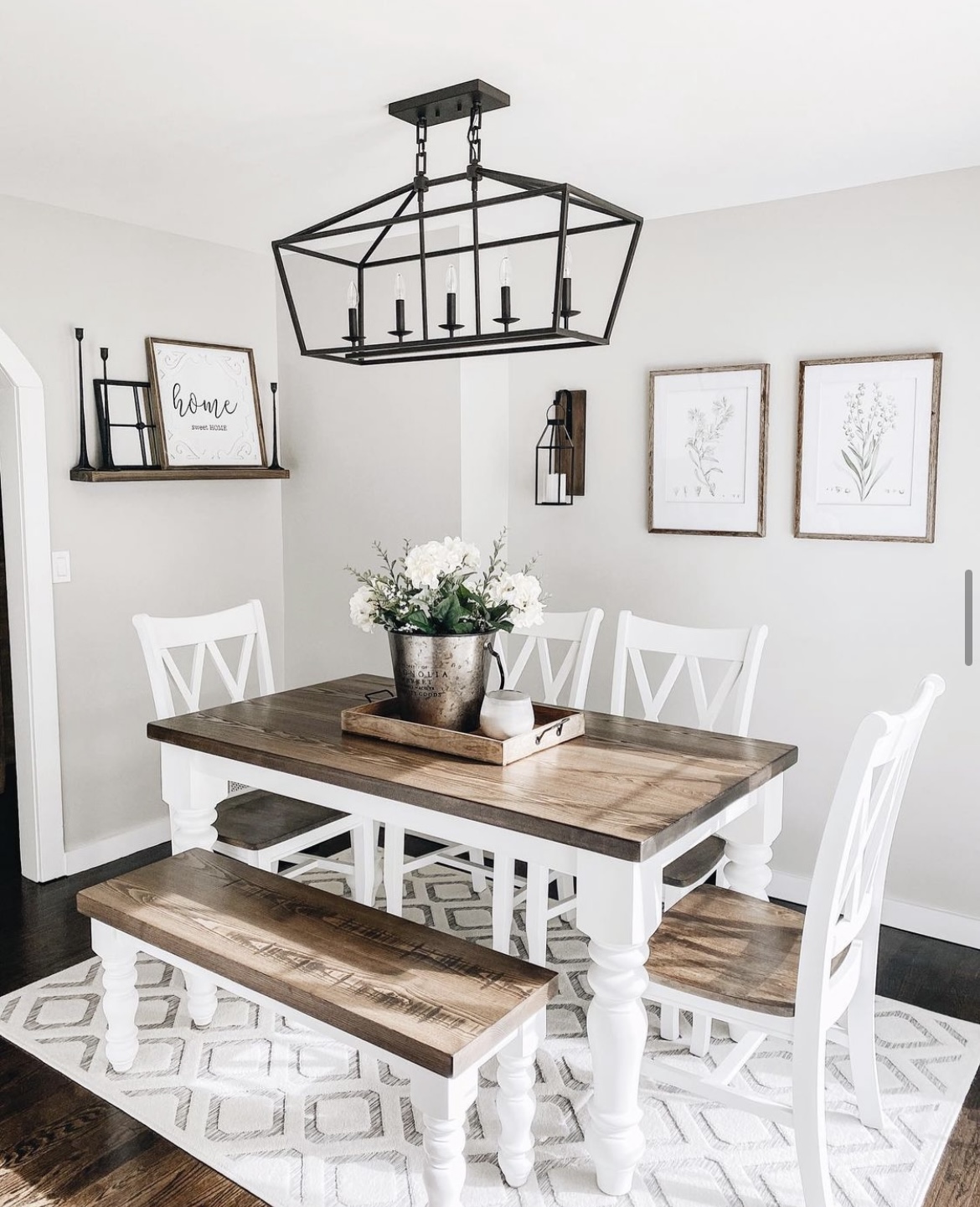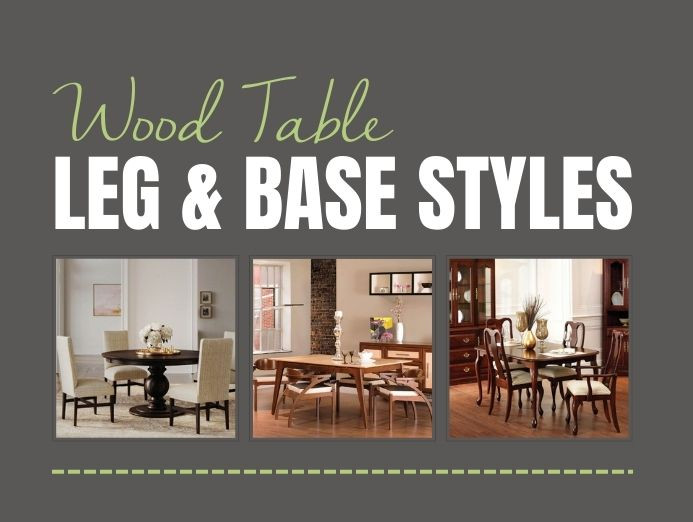Creative Ideas for Replacing or Refurbishing Your Dining Room Table Legs
Creative Ideas for Replacing or Refurbishing Your Dining Room Table Legs
Blog Article
How to Pick the Perfect Dining-room Table Legs for Your Home Decor
Picking the ideal dining room table legs is a nuanced procedure that needs careful factor to consider of different components, including your room restrictions, visual choices, and practical demands. The interplay between dimensions, styles, and products can substantially influence the atmosphere of your dining area, making it crucial to approach this choice carefully.
Assess Your Eating Area
Assessing your dining room is important for picking the right table legs that enhance both visual appeals and functionality. Begin by determining the measurements of your dining location, including ceiling height, floor space, and closeness to various other furnishings. This details will help figure out the suitable size and elevation of your table, which directly affects the selection of table legs.
Following, consider the style and format of your eating space. For instance, an open-concept design might gain from table legs that use visual agility, such as slim steel or acrylic options. Alternatively, a more conventional setup may require strong wood legs that supply a feeling of durability.
Review the existing shade combination and materials in your dining area. Integrating the table legs with these components produces a natural appearance that improves the total decor.
Eventually, a complete assessment of your dining area will certainly guide you in making an informed choice, making sure that your table legs not just enhance the aesthetic allure yet also serve functional purposes.
Consider Your Style Preferences
When picking dining-room table legs, it is vital to review your individual style preferences, as they dramatically affect the general visual of your eating space. Your option of table legs can either complement or comparison with existing decoration, making it vital to align them with your recommended indoor layout style.
If your home leans towards a modern visual, consider sleek steel or minimal wood legs that supply a tidy, minimalist appearance. For a much more conventional technique, elaborate wood legs with elaborate carvings can include a touch of beauty and refinement. Industrial designs gain from robust, raw products such as recovered wood and steel mixes, reflecting a rugged appeal.
In addition, farmhouse and rustic styles usually favor strong, chunky legs that evoke a sense of heat and convenience. Conversely, if your décor is eclectic, you may pick unconventional shapes or a mix of products to create aesthetic interest.

Evaluate Product Options
The option of product for eating area table legs plays a critical role in both durability and visual appeal. Usual products include timber, metal, and composite options, each offering distinct attributes that can affect the total appearance and durability of your table.
Timber is a classic selection, recognized for its heat and versatility. Hardwoods like oak and walnut give remarkable strength and can be completed in different stains to match any type of design. Softwoods like want are a lot more prone to damages and scratches, making them less suitable for high-traffic locations.
Steel legs, commonly crafted from steel or aluminum, show modernity and commercial appeal. They are resistant and extremely durable to use, making them ideal for families with children or frequent events (dining room table legs). Additionally, metal can be completed in different colors, boosting the personalization possibilities
Composite materials, such as MDF or laminate, deal affordability and diverse styles. While generally much less resilient than solid wood or steel, they can still give a trendy appearance and are commonly very easy to keep.
Ultimately, the material you pick should align with your lifestyle, aesthetic preferences, and the degree of use your eating table will certainly experience.
Determine Elevation and Dimension
Selecting the appropriate elevation and size for your dining area table is necessary for both functionality and convenience. The basic height for eating tables generally ranges from 28 to 30 inches, allowing adequate legroom for most people when seated. It is important to consider the dimensions of your dining space and the kinds of chairs you intend to use.

Moreover, think about the proportions of your dining-room. A larger table in a roomy area can produce a grand ambiance, while a smaller sized table works well in more intimate settings. Eventually, the best elevation and dimension will certainly harmonize with your overall style and enhance the eating experience for you and your visitors.
Explore Modification Opportunities

In addition, the layout of the legs can be personalized to fit various styles, such as rustic, contemporary, or industrial. For example, tapered legs can stimulate a mid-century modern feel, while beefy, block-style legs might reverberate with traditional or farmhouse style.
House owners can likewise check out shade finishes, from natural timber stains you can check here to paint, allowing them to match linked here or comparison with the tabletop and bordering decoration.
In addition, leg height can be adapted to accommodate specific seating setups or individual preferences, improving both convenience and functionality.
Last but not least, unique decorations, such as makings or ornamental braces, can further customize the table legs, making the eating experience not simply a statement however a meal piece in the home. By taking into consideration these modification alternatives, home owners can create a dining-room table that absolutely reflects their uniqueness.
Verdict
Choosing the optimal dining-room table legs requires careful factor to consider of different aspects, consisting of the measurements of the eating space, design choices, material durability, and wanted height. Modification choices better enhance the capacity to achieve a natural aesthetic that enhances the general decoration. By methodically assessing these components, homeowners can guarantee that the selected table legs not only meet practical requirements but additionally add positively to the dining experience and setting of the home.
Picking the optimal eating room table legs is a nuanced process that requires careful consideration of various components, including your space restraints, aesthetic preferences, and practical demands.Examining your eating room is critical for selecting the right table legs that match both looks and functionality.When establishing dimension, determine the area where the table will certainly be put to ensure it fits comfortably, enabling for at the very least 36 inches of clearance around the table for very easy activity. A bigger table in a sizable location can produce a grand ambiance, while a smaller sized table functions well in even more intimate settings.Choosing the excellent eating room table click this legs requires cautious consideration of various variables, consisting of the dimensions of the dining area, design choices, product toughness, and preferred elevation.
Report this page